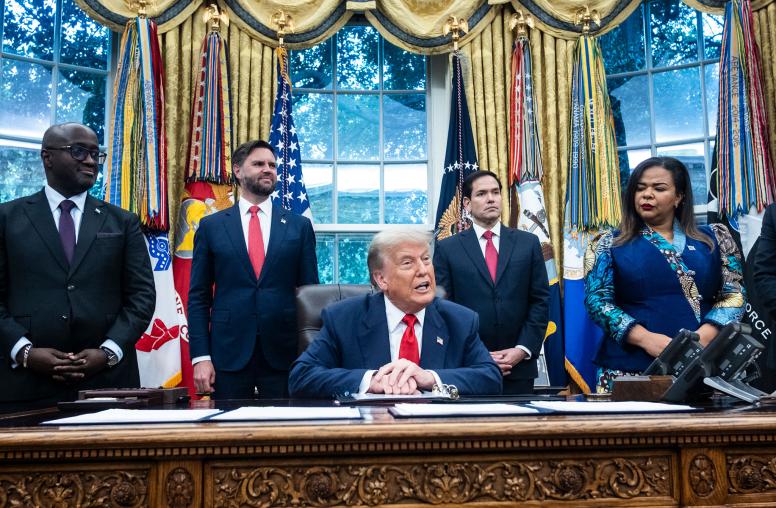Conflict Analysis
Understanding Causes, Unlocking Solutions
THE USIP BOOKSTORE IS TEMPORARILY UNAVAILABLE
Conflict Analysis: Understanding Causes, Unlocking Solutions is a guide for practitioners seeking to prevent deadly conflict or mitigate political instability. This handbook integrates theory and practice and emphasizes the importance of analyzing the causes of peace as well as the causes of conflict. It stresses that conflict analysis is a social as well as an intellectual process, helping practitioners translate analysis into effective action.
"A must read for all analysts and practitioners seeking to cope with conflict. The book is broadly rooted in the literature on analysis and planning and provides good concrete examples at every point. A deep and thoroughly practical handbook."
—Dean G. Pruitt, Institute for Conflict Analysis and Resolution, George Mason University
The change in the patterns and nature of deadly conflicts since the end of the Cold War has spurred many organizations in and outside governments to develop robust strategies to anticipate, prevent, and respond to these conflicts. Conflict analysis is the critical first step toward meeting these objectives.
Conflict Analysis: Understanding Causes, Unlocking Solutions is a guide for practitioners seeking to prevent deadly conflict or mitigate political instability. Governments, nongovernmental organizations, and businesses operating in conflict zones will find this volume to be a practical, accessible reference for understanding and communicating persuasively about threats of organized violence. This handbook integrates theory and practice and emphasizes the importance of analyzing the causes of peace as well as the causes of conflict. It stresses that conflict analysis is a social as well as an intellectual process, helping practitioners translate analysis into effective action. To illustrate key points, Levinger draws on both historical and contemporary cases, including the Cuban missile crisis, the Israeli-Palestinian conflict, the Yugoslav wars of secession, the Rwandan genocide, the 9/11 attacks, and the Iraq and Afghanistan wars.
Part I examines contemporary global conflict trends, perspectives on the causes of conflict and peace, and quantitative models for early warning and risk assessment. Part II provides practitioners with a menu of analytical tools for systematically assessing causes and potential trajectories of deadly conflicts. Part III focuses on the role of conflict analysis in decision making and program implementation, including the social dimensions of conflict analysis.
The analytical tools in this volume illuminate emerging trends in complex, volatile, and ambiguous environments and will enable practitioners to anticipate and respond with greater agility to threats and opportunities.
Matthew Levinger is visiting professor of international affairs and director of the National Security Studies Program at The Elliott School of International Affairs, George Washington University. Among his previous positions, he was a senior program officer at USIP's Academy of International Conflict Management and Peacebuilding, director of the Academy for Genocide Prevention at the U.S. Holocaust Memorial Museum, and a William C. Foster Fellow at the U.S. Department of State.
Conflict Analysis is the second volume of the U.S. Institute of Peace Academy Guides, a series developed by the Institute's Academy for International Conflict Management and Peacebuilding. Combining theory and practice and emphasizing strategic thinking, the Guides are geared for policymakers and third parties working in conflict zones, as well as for students of conflict management and peacebuilding. Peace Economics is the first volume in this series.



